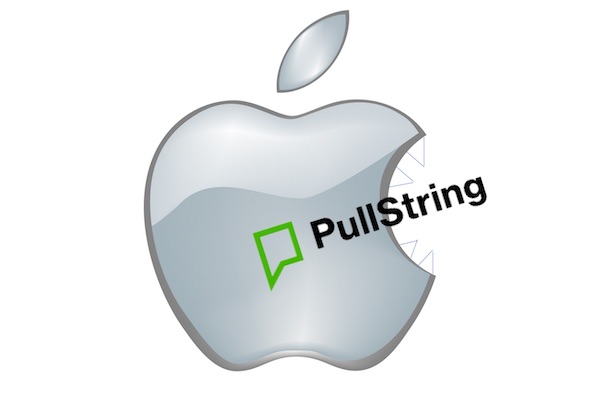Apple Acquires PullString as Voicebot Previously Reported – Here’s What It Means for the Voice Community

- Apple acquired PullString for about $30 Million according to Axios, less than one-fifth of the company’s April 2016 valuation
- Voicebot’s earlier reporting indicates that the acquisition took place in December 2017
- While this may not have been a win for investors, it is a very significant signal of Apple’s intentions to make Siri development easier for iOS developers
- The acquisition also offers Apple in-depth domain knowledge around voice app development, voice app designer and developer needs, and the intricacies of both Amazon Alexa and Google Assistant
Axios reported Friday that Apple has acquired voice app development software providerPullString. Voicebot had reported this in January in the Voice Insider Newsletter Issue #22, but at that time we didn’t have any guidance on the purchase price. The Axios reporting suggests that Apple paid about $30 million for the PullString acquisition with another “$10 million in potential earnouts for management.” Voicebot’s earlier research suggests the acquisition was actually finalized in December 2017. During that period PullString ended its marketing commitments for a number of programs and apparently let go nearly all of its sales and marketing focused employees.
Pitchbook data show that PullString had raised nearly $44 million from investors, including 13.5 million in April 2016, so this is not a win for investors. The previous funding round placed the company’s valuation at $164 million. That funding coincided with PullString’s pivot from supporting voice enablement of toys to launching a development platform to support brands and agencies building Amazon Alexa skills. You can learn more about PullString’s history in Voicebot Podcast Episode #21 with company founder Oren Jacob. The pivot was used to justify a tripling of the valuation of the company from the previous funding run just 16 months earlier. So, there was significant enthusiasm behind supporting the growth of the Alexa ecosystem, but that obviously did not yield enough progress to realize the 2016 valuation. While this may not have been a win from a venture investor standpoint, the acquisition by Apple makes it significant.
PullString Acquisition Indicates Apple’s Intentions
Why might Apple want to buy PullString? It’s all about the iOS developer community and enabling it to move quickly in developing voice-enabled apps that take advantage of Siri. Let’s say Apple is planning a big update to Siri that includes broader domain support and even decouples voice features from iOS apps. This is the type of announcement you might expect to hear in June at WWDC, Apple’s annual developer conference. If it is about to open up development for Siri, Apple will want to make sure adoption is fast. Offering enterprise tooling to streamline voice app development is a way to enable your 15 million iOS developer community to ramp up quickly. This is a solid strategy for a fast follower or a slow follower in this case.
You may recall Google made a similar acquisition when it purchased API.ai (now Dialogflow) shortly before launching Google Assistant in 2016. The tools are different, but the intent is based on the same motivation: provide tools to make it easier for developers to support your voice assistant. There would be little reason for Apple to acquire PullString unless it intended to expand developer activity around Siri. Reporting by The Information revealed that Apple recently shifted the long-time executive overseeing Siri to another role. It’s possible we might see someone like PullString founder Oren Jacob emerge in that role or as a key deputy in reinvigorated Siri executive team. His Pixar roots should align well culturally with Apple.
Was the PullString Acquisition Simply an Acquihire?
Another obvious question is whether the PullString acquisition was simply an acquihire which is a type of acquisition designed primarily to hire the company staff with little interest in its existing software assets. That is possible. PullString’s team has built a development platform designed to support the leading voice assistants, Alexa, and Google Assistant, and as a result, have deep domain knowledge. They also have knowledge of the voice app development community and the brands and media companies that Apple will surely want to support Siri. Apple has made previous acquisitions simply to leverage domain expertise to support other projects. This may be partially true here, but I also expect to see PullString’s Converse platform re-emerge as a Siri development tool. That familiarity could enable former PullString users to be more comfortable in initiating their Siri efforts as well as providing tools for those 15 million iOS developers. Expect more announcements from Apple this spring.
Follow @bretkinsella Follow @voicebotai
Voicebot Podcast Episode 21 – Oren Jacob, CEO Pullstring Talks Pixar, Alexa and Sponge Bob








